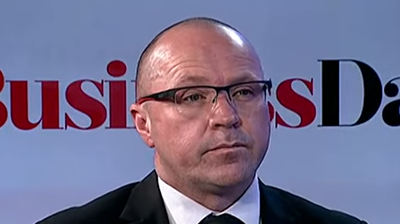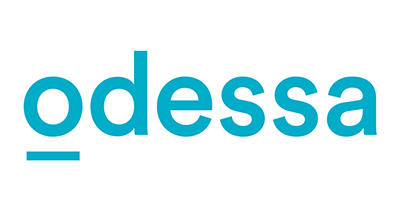
“For years people have been writing off the South African economy, but with the possible exception of the global credit crunch in 2008-2009 and the Covid-19 pandemic, business has been great here,” Mike Brandon, managing director of the working capital division of Merchant West, an independent South African lender, told Asset Finance Connect when we asked him about trading conditions in the country.
Brandon has recently contracted to upgrade Merchant West’s existing asset-based lending (ABL) system developed by William Stuckey and Associates to a new cloud-based system offered by Solifi, who in 2021 acquired the Stuckey platform that Merchant West have relied on since the 1990s.
The independent lender sees opportunities for increasing volumes of finance through ABL including invoice finance, and is preparing the business for rapid, controlled growth using cutting edge technology which will improve the customer journey as well as reduce costs; improve access to valuable timely data which can help reduce fraud and improve decision-making; and will position Merchant West as a technology leader in the region.
“Being the first lender to invest in Solifi’s new cloud-based platform is important to us,” Brandon said.
Working capital and resilience of SMEs
Bank lending in South Africa has traditionally been the primary source of external financing for South African firms, including small and medium-sized enterprises (SMEs) but this has been unable to bridge a funding shortfall of between R86 billion and R346 billion (€4.5 billion-€17.4 billion).
Low levels of liquidity and lack of access to external finance generally has reduced the resilience of SMEs to withstand recent economic headwinds including the Covid-19 pandemic, which resulted in widespread lay-offs and drastic cuts in spending; and the more recent energy blackouts imposed by Eskom, the electricity monopoly, which has resulted in a reduction of 1.3% GDP in Q4 2022.
The effect of low liquidity and low resilience has been that SMEs fail to deliver the benefits experienced elsewhere. Although South Africa has a similar proportion of small businesses as the EU (98.5% compared to the EU’s 99.4%), SMEs in South Africa account for fewer jobs (26% compared to 68%) and contribute less as a share of GDP (39% compared to 57%).
The South African government has implemented various programs and initiatives to promote access to finance for SMEs with mixed results. In 2020 the government announced a R100 billion guarantee for lending to SMEs. Predictably this was delivered via the banks. Uptake generally for government schemes has been low.
Banks versus independent lenders
South Africa has a highly concentrated banking sector, with over 90% of assets controlled by just six banks. Globally this level of concentration has generally been found to be bad news for smaller businesses.
Whereas banks have cheaper access to funds than non-bank lenders, they tend to be more risk adverse and view SMEs as expensive and high risk compared to larger corporates competing for the same funds. That means that access to finance is hard, and the journey is often difficult.
In return SMEs are wary about debt and view financial partners transactionally rather than seeking to build stronger banking relationships. Most SMEs self-fund (87%) or rely on friends and family (8%). Less than 2% rely on bank loans and when they do they tend to use overdrafts. Customer understanding of the range of finance products that is available remains low.
Independent lenders have more appetite to build stronger relationships with their customers, and to improve customer understanding of alternatives to overdrafts and seek to gain competitive advantage through a better onboarding experience, and stronger and longer-term lender-borrower relationships.
Brandon is quick to point out the advantages that Merchant West offers. As a former bank employee, he is well aware of the relative strengths of banks and independents and sees an opportunity to build deeper relationships with his customers, and to work proactively with them. Getting the mix of automation and personal service right is crucial: “Our customers value the time we spend working with them to get to understand their businesses.”
“The experience that bank customers face when they apply for overdrafts can be slow and difficult,” he told us. “Specialist lenders like Merchant West can do better, and they can deploy technology which further improves the customer journey.”
Rapid growth in invoice finance in South Africa
There is considerable optimism about the potential for invoice finance in South Africa. Factoring, (where the lender doesn’t only lend against an invoice, but also gets involved in administering the sales ledger), increased by an amazing 32% in 2022 according to the FCI, the global representative body for factoring; and the assumption is that the size of the potential marketplace is huge.
“This year alone we have experienced a doubling of business both in terms of enquiries and business we are writing,” Brandon told us.
“Invoice finance offers a better experience for customers seeking to conserve cash during difficult times, and to fund growth during better economic conditions. A big advantage of invoice finance is that it is a simple product which provides additional funds as a customer’s business grows; balance sheet requirements are not as rigid as bank loans; and finance costs are more transparent.”
Technology can further improve customers’ control over their borrowing and costs.
An example is the new self-serve portal which Merchant West are introducing through Solifi. This will give customers clarity on their exposure providing a detailed audit trail and in-depth information on each transaction. “These are things which our customers tell us are important to them,” said Brandon.
“For lenders too the attractiveness of invoice finance is increasing, even for banks. Overdrafts have become less economic to offer as a result of regulatory capital change.”
Technology reduces costs through increased automation, a benefit which builds as portfolios scale: “We can grow without taking on additional overheads”.
But it can also be used to reduce risk through the availability of better and more-timely data which is particularly important in early detection of fraud, which Brandon points out is perhaps the largest risk in funding businesses through invoice finance.
“The new ABL platform we have invested in provides us with a constant feed of more timely data so we are much better informed and faster informed about the business we are writing.”
The opportunities from technology leadership
Access to data is a key weapon in the armoury of lenders as they seek to provide liquidity not just to the largest easiest-to-lend to corporates but also progressively to smaller businesses where real time data might offer an alternative to traditional measures of creditworthiness, for example.
Merchant West’s focus on technology leadership makes sense, not just because they can still gain competitive advantage over banks, who are slow to integrate new technology into their well-developed technology stacks, but also because the fintech market is moving fast in this direction already, as the opportunities to overcome traditional barriers to finance through better tech become clearer.
As McKinsey note “rather than a ‘fintech disruption,’ the continent is experiencing a ‘fintech eruption,’ and local and international investors are taking notice. African fintech is emerging as a hotbed for investment, with average deal sizes growing and the proportion of fintech funding in Africa increasing over the past year, bringing jobs and growth to African economies.”
McKinsey see leading countries like South Africa standing at a threshold, moving beyond basic financial services infrastructure including delivering online and offline payments, to added value tech which will deliver business services including invoicing and analytics; SME lending to improve liquidity; and ultimately open banking and banking-as-a-service.
“Economies with more mature financial systems and digital infrastructure, such as South Africa and Nigeria, are likely to see more innovation in advanced financial services, including business-to-business (B2B) liquidity and regulatory technology such as anti–money laundering and know-your-customer (KYC) compliance.”
McKinsey estimate that that the fintech market, as a whole, can grow by about eight times, if penetration levels can expand to similar levels as those of current market leaders.
The winners, they suggest, will be those who match their value proposition to what is needed in the specific markets in which they operate (given the huge variation in development between different countries in Africa). Successful fintechs may start with a B2B product and evolve; they will seek to establish repeatable revenue sources (such as invoice finance); and they need a business model which works even where there is a low average revenue per user (as is the case with consumer and some SME customers).

